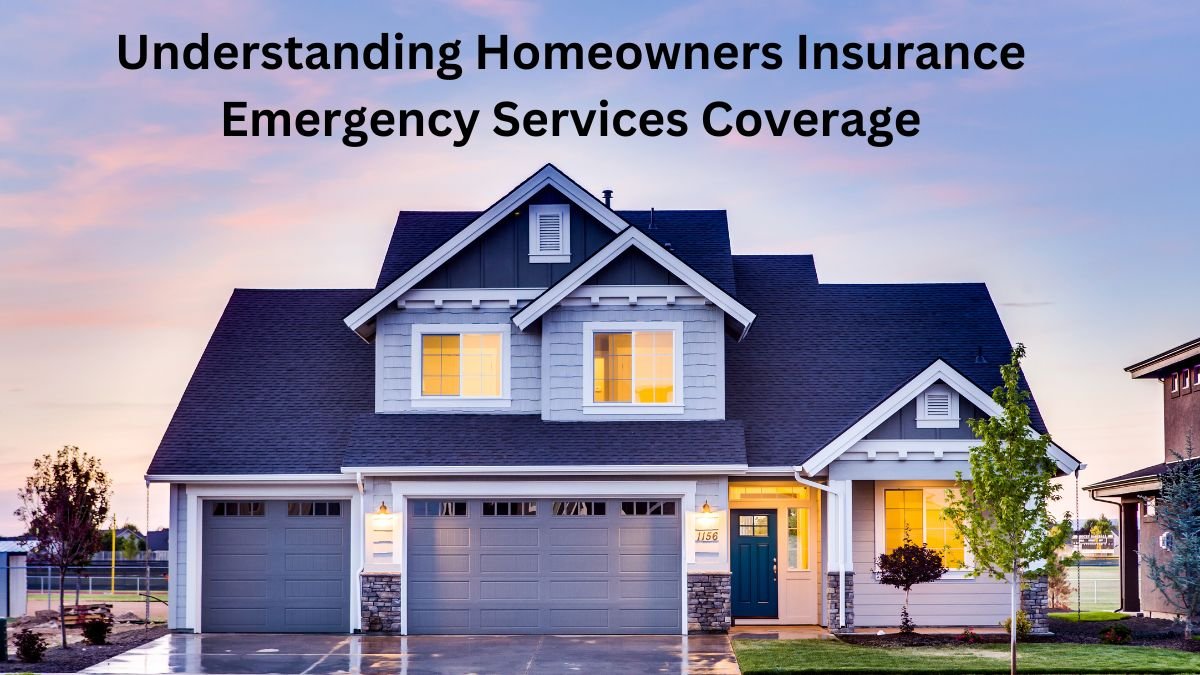Introduction
Owning a home is one of life’s most significant investments. To protect this asset, purchasing homeowners insurance is crucial. However, one area that often goes unnoticed or misunderstood is homeowners insurance emergency services coverage. This article explores what this coverage entails, the emergencies it addresses, and why it’s essential for every homeowner. Additionally, we’ll discuss the financial challenges homeowners face during unexpected events and how this type of insurance can provide a safety net.
What Is Homeowners Insurance Emergency Services Coverage?
Homeowners insurance emergency services coverage is a specialized component of a homeowners insurance policy designed to cover urgent expenses arising from unforeseen events. Common examples include:
- Boarding up a property after a break-in.
- Conducting immediate repairs to mitigate further damage after a storm, fire, or vandalism.
- Hiring security services to protect property after significant damage.
Understanding this coverage is vital for every homeowner to ensure they are prepared for emergencies.
What Emergencies Does Homeowners Insurance Cover?
Homeowners insurance primarily covers damages caused by “covered perils.” A standard policy (often referred to as an HO-3 policy) typically includes protection against:
- Fire, lightning, or smoke
- Ice, snow, sleet, or hail
- Water damage from burst pipes or leaking appliances
- Explosions, riots, thefts, or vandalism
- Falling objects, such as trees or debris
- Volcano eruptions
- Electrical surges or lightning strikes
Special Coverage for Regional Risks
For certain areas prone to specific risks, additional coverage may be necessary. Examples include:
- Flooding
- Earthquakes
- Windstorms
- Landslides
- Sinkholes
- Prolonged power outages
Homeowners in high-risk regions should consider adding riders or purchasing separate policies to cover these hazards.
The Importance of Emergency Services Coverage
1. Peace of Mind
This coverage ensures homeowners can access funds quickly during emergencies, providing reassurance during stressful situations.
2. Financial Protection
Emergencies often come with hefty expenses. Emergency services coverage helps cover costs for immediate repairs, security services, and temporary relocation, reducing the financial burden.
3. Quick Response
Time-sensitive emergencies, such as burst pipes or storm-damaged roofs, require immediate action. Emergency services coverage ensures prompt assistance to mitigate further damage.
What Does Homeowners Insurance Emergency Services Coverage Typically Include?
1. Emergency Repairs
This includes covering urgent repairs, such as:
- Securing a roof damaged by a storm.
- Fixing burst pipes to prevent water damage.
- Boarding up broken windows after vandalism.
2. Temporary Relocation
If your home becomes uninhabitable due to an emergency, this coverage provides funds for temporary accommodations, ensuring you have a safe place to stay while repairs are underway.
3. Security Services
In cases of vandalism or severe damage, hiring security personnel to safeguard the property can be necessary. This coverage compensates for these costs.
4. Cleanup and Restoration
For disasters like floods or fires, cleanup and restoration services are often included, helping return your home to its original state.
How to Ensure You Have Adequate Coverage
1. Review Your Policy
Examine your homeowners insurance policy carefully to understand the extent of emergency services coverage. Check the types of emergencies covered and the coverage limits.
2. Talk to Your Insurance Agent
If you have questions or need clarification, contact your insurance agent. They can help you understand your current coverage and suggest additional options if needed.
3. Consider Additional Coverage
Depending on your location and risks, you may need to add riders or purchase separate policies to cover emergencies like flooding or wildfires.
Common Misconceptions About Emergency Services Coverage
“I Don’t Need It Because I Have a Good Security System”
While a security system helps prevent some incidents, it can’t protect against natural disasters or structural damage. Emergency services coverage ensures you’re prepared for unforeseen events.
“I Can Handle Emergencies on My Own”
Many emergencies require specialized expertise or equipment. This coverage provides access to professional services, ensuring timely and effective solutions.
Sapiens Auto Insurance Florida: Coverage You Can Trust
Tips for Maximizing Your Coverage
| Tip | Description |
|---|---|
| Understand Your Coverage | Know your policy’s limits and ensure it covers common emergencies in your area. |
| Maintain an Emergency List | Keep a list of approved contractors and service providers for quick access during emergencies. |
| Document Losses | Take photos and keep records of damages and repair costs to expedite claims processing. |
Conclusion
Homeowners insurance emergency services coverage is a valuable asset for any homeowner. It provides financial support, peace of mind, and quick assistance during emergencies. By understanding your policy and ensuring adequate coverage, you can protect your home and finances from unexpected challenges. Don’t wait for an emergency to strike—review your policy today and consult your insurance agent to fill any gaps in coverage.
What does homeowners insurance emergency services cover?
Emergency services coverage includes repairs, temporary relocation, security, and cleanup or restoration services.
How do I ensure I have adequate coverage?
Review your policy, talk to your insurance agent, and consider adding riders or additional coverage for specific risks.
Are emergency services included in standard homeowners insurance?
Not always. Emergency services coverage may require additional riders or separate policies, depending on the insurer.
What are the benefits of having emergency services coverage?
It mitigates further damage, reduces repair costs, and provides quick access to professional services during emergencies.
Can I increase my emergency services coverage?
Yes, most insurers allow you to increase coverage or add it at the time of signing the policy. Consult your insurance agent for details.

